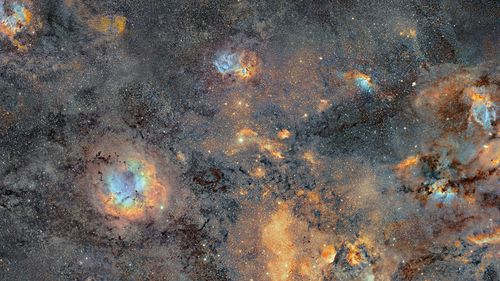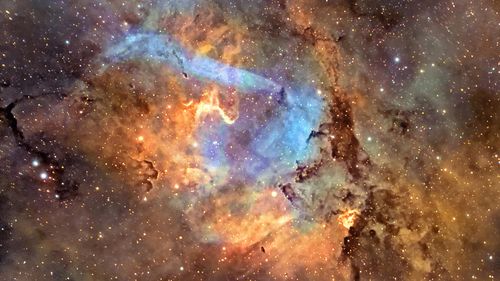Capturing panoramas of the Milky Way, the galaxy in which we reside, might seem like a daunting task considering it is, according to the National Aeronautics and Space Administration, about 100,000 light-years across.
But Finnish astrophotographer JP Metsavainio has spent almost 12 years stitching together 234 frames to create a mosaic of 125 degrees of sky.
The panorama, which shows 20 million stars, captures the space between the Taurus and Cygnus constellations and was completed on March 16.

“Astronomical photography is one of the most difficult forms of nature photography,” Mr Metsavainio, a professional artist, told CNN Friday.
“My mosaic image is generally very deep, meaning that it shows extremely dim targets and formations in gas clouds of our home galaxy, the Milky Way.”
Each image in the mosaic is an independent artwork and available to see on Mr Metsavainio’s blog.
He claims an image like this has never existed before, which is one of the reasons he decided to dedicate thousands of hours to the project.
Clear, dark skies away from the light pollution of cities are vital to astrophotography, the photography of astronomical objects, an activity that happens worldwide.
Patience is also key, as it can take hours or even days to capture just one photo over a long exposure.
Mr Metsavainio used a range of modified camera lenses and telescopes at his observatory in northern Finland, near the Arctic Circle.
He first uses image processing software to adjust levels and color before stitching the separate panels together on Adobe PhotoShop, using stars as indicators to match the correct frames.
The astrophotographer said his favorite images are of supernova remnants, a phenomenon that forms after a star explodes.
Several of them are visible in his panorama and the Cygnus Shell, a particularly dim supernova remnant which can be seen as a pale blue ring near the North America nebula, took the astrophotographer 100 hours alone to create.
His blog has had 750,000 visitors since the photo was published, up from an average of about 1,000 a day.
“The reason I keep doing my slow work is basically an endless curiosity, I love to see and show how wonderful our world really is,” he told CNN.

“This is lonely and slow work but every time I see the results, I’m as thrilled as the first time.”
Alongside Queen guitarist and astrophysicist Brian May, Mr Metsavainio participated in a live virtual broadcast in September hosted by the Science Museum of London.
At the time he was publishing a 3-D book about cosmic clouds with the musician and Astronomy Magazine editor David J Eicher.
A devoted lover of the night sky, Mr Metsavainio plans to continue his work but with a different lens.
“I have shot the night sky with relatively short focal length optics for the last few years,” Mr Metsavainio said.
“In the future, I’ll go back to a longer focal length instrument.”
This content first appear on 9news

